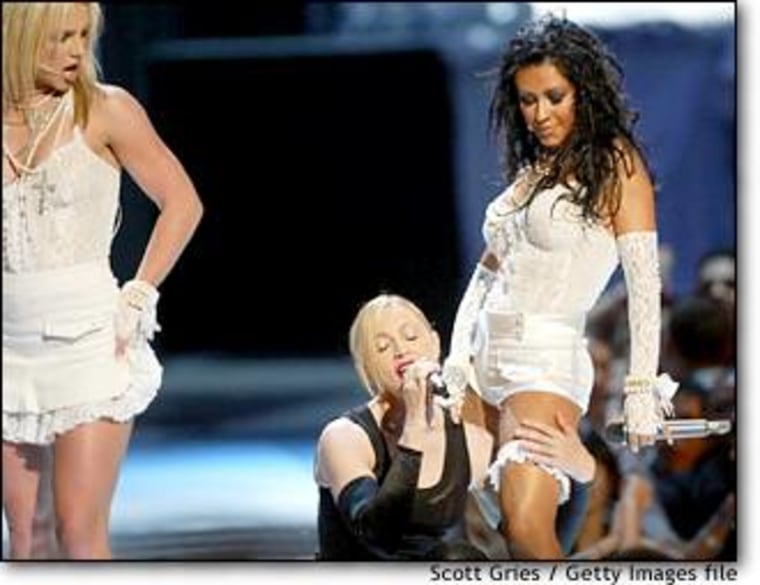If you thought the Madonna-Britney-Christina kiss was a harmless stunt designed to snag a day of free press for an aging pop star and a lackluster MTV Video Music Awards ceremony, think again — especially if you have a teen-age daughter. The sad truth is that this acting out of the ultimate male “girl kissing girl” fantasy has become commonplace when it comes to entertainment programs targeting young adults.
Paris Hilton and Nicole Richie contemplate a threesome in their new reality TV show The Simple Life, and in the recently released R-rated film Thirteen — based in part on the personal experiences of a female too young to even attend an R-rated movie without adult supervision — the two hippest and best-looking girls in school offer a threesome to their 20-something neighbor. Free-flowing sexual practices are exalted on The Real World, the MTV series that serves as The Official Sexual Handbook for teens, and even a recent Oprah episode included a discussion about the rise of bisexual behavior among women age 20 and younger, with youthful proponents characterizing the emerging lack of sexual boundaries as a sign of female power. It is true that the Olson twins have yet to get into the act and throw their mass-marketing heft behind The Teen Threesome, but one does wonder, what’s next?
This ubiquitous pop-culture presence of a practice once reserved for porn flicks or Penthouse magazine is sending a confusing message about sex and power to an emerging generation of precocious women. Celebrating sexuality is one thing. But when young women are bombarded with cultural encouragement to engage in sex acts with other women or multiple partners — not because they identify themselves as lesbians or even as bisexual, but because it is portrayed as a sexy and sure way to attract men — it is a sign that something is very wrong in our culture. In other eras young women were told to wear stilettos, or to buy a certain brand of lipstick or cigarettes if they wanted to win a man; now we are telling them they might need to alter their sexual identities.
CONSUMERISM and EXPLOITATION
It should be obvious that this gradual mainstreaming of the ménage has nothing to do with female power — and everything to do with raising the bar when it comes to female exploitation and the identification of new ways to use sex to push products. This year’s Abercrombie & Fitch fall quarterly “Back to School” catalog has been criticized for its suggestive tone — including steamy couplings and threesomes, with one sequence featuring a young woman in preppy skirt disrobing before two boys. Also keep in mind that Budweiser — more savvy about its target demographic than most — was pandering to male consumers, not women, when its “So, Date Both of Us,” commercial debuted during last year’s Super Bowl. In the ad, a comely woman tells a smitten male that he need not choose between her and her presumably stunning friend — he is welcome to date both.
CONFUSING MESSAGE
While adult women with healthy self-esteem recognize the commercial as a playful and harmless “in your dreams” storyline — and may be oblivious to the presence of even more aggressive messages communicated in youth-oriented venues — younger women just beginning to explore their sexuality are likely to be confused. With one in five U.S. teens having sex by their 15th birthday and girls as young as 12 giving oral sex at the end of a date instead of a goodnight kiss, do we really think it’s a good idea to tell young women it is “normal” to make out with their female friends and share boyfriends?
It is easy to see what men are getting out of this — now and down the road. Someone remind me, what’s in it for women?
Lia Macko is writer and media consultant. She has served as a senior producer at CNN, MSNBC, and COURT TV and is the co-author of a book about Gen X working women titled “Mid-Life Crisis at 30: How the Stakes Have Changed for a Generation” (Rodale Press: March 2004).
